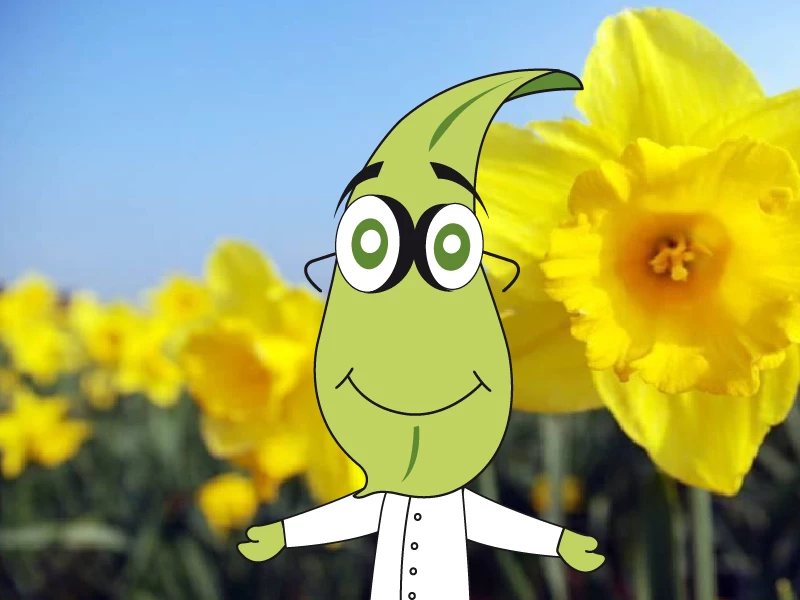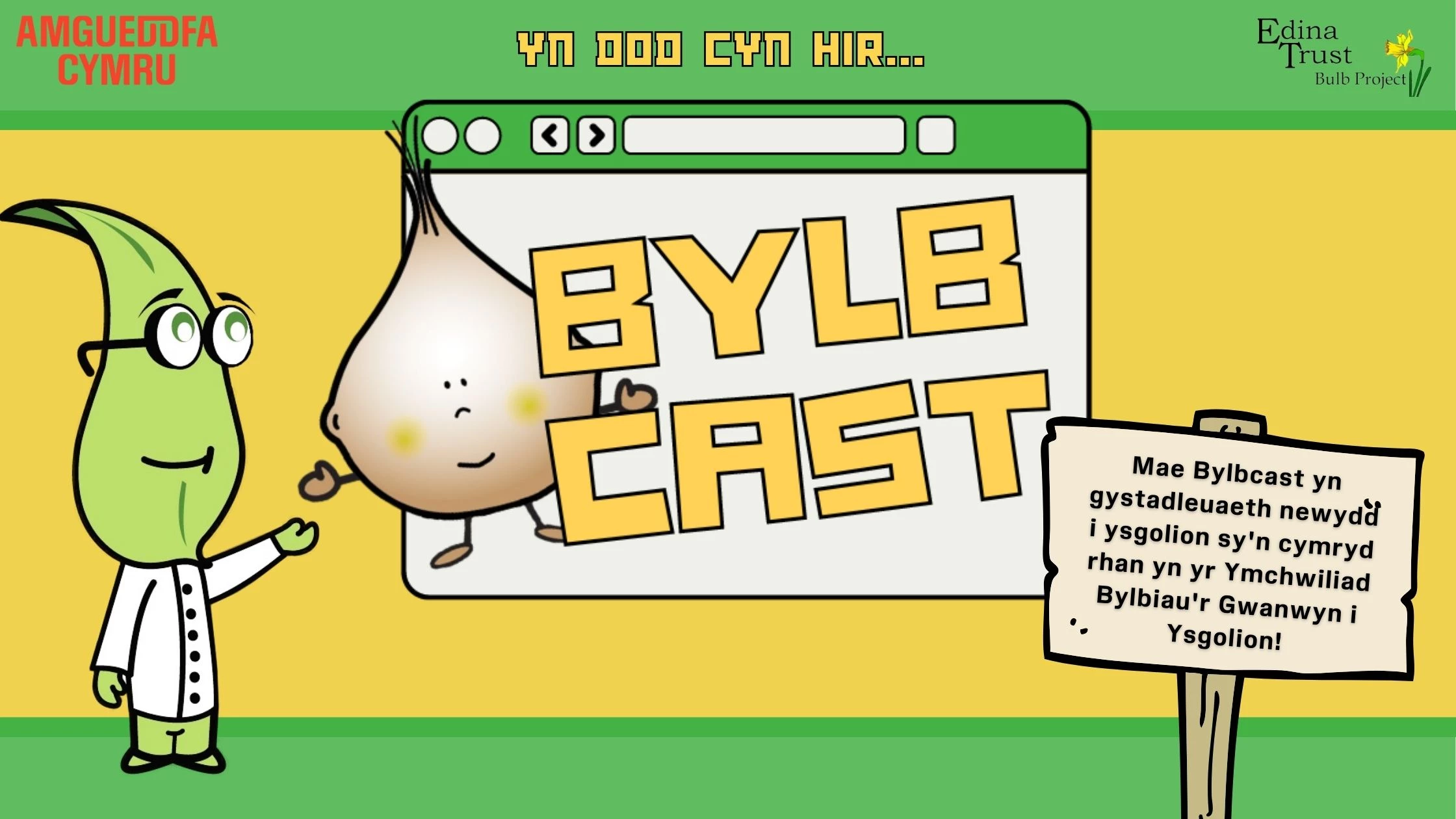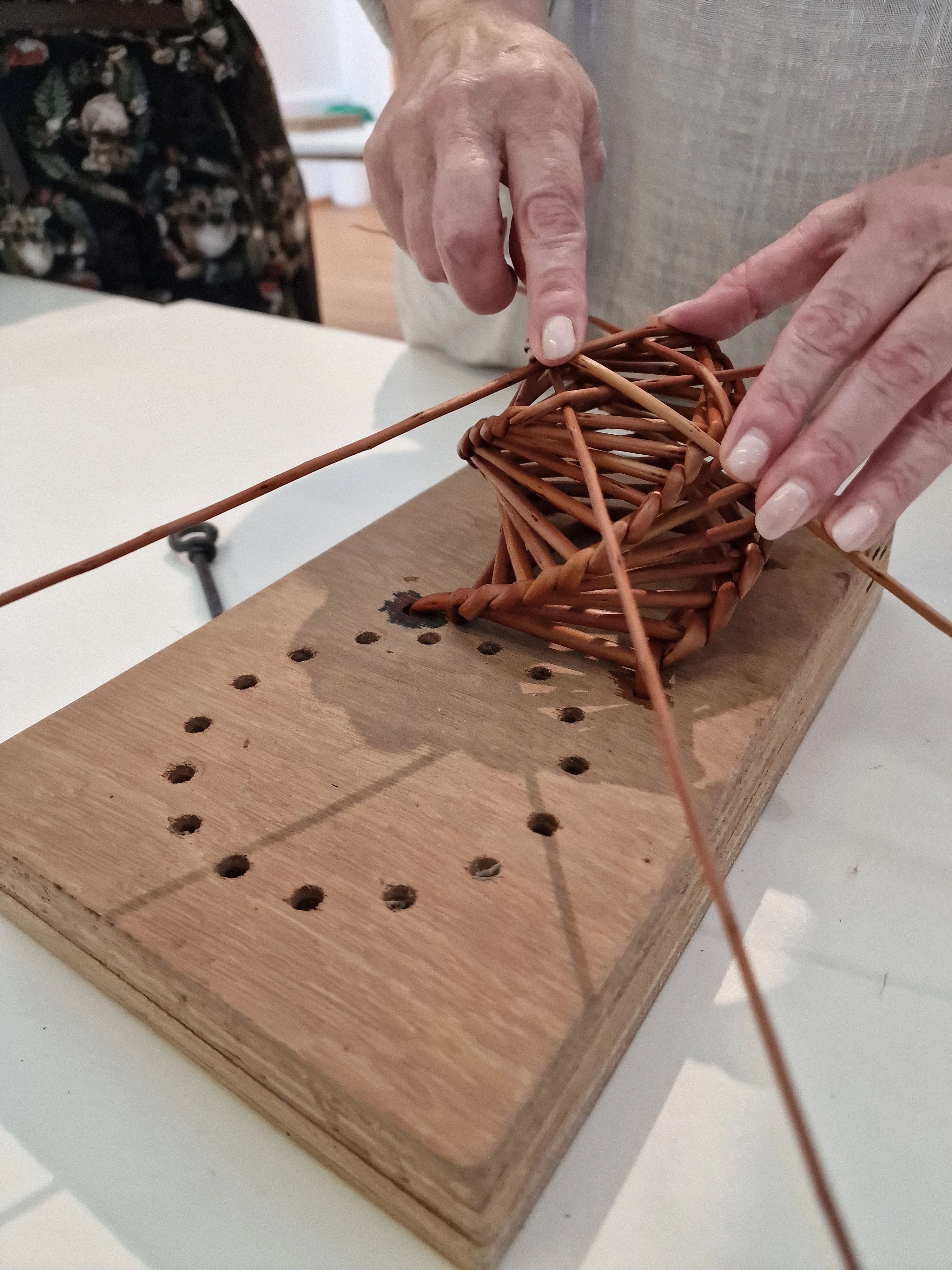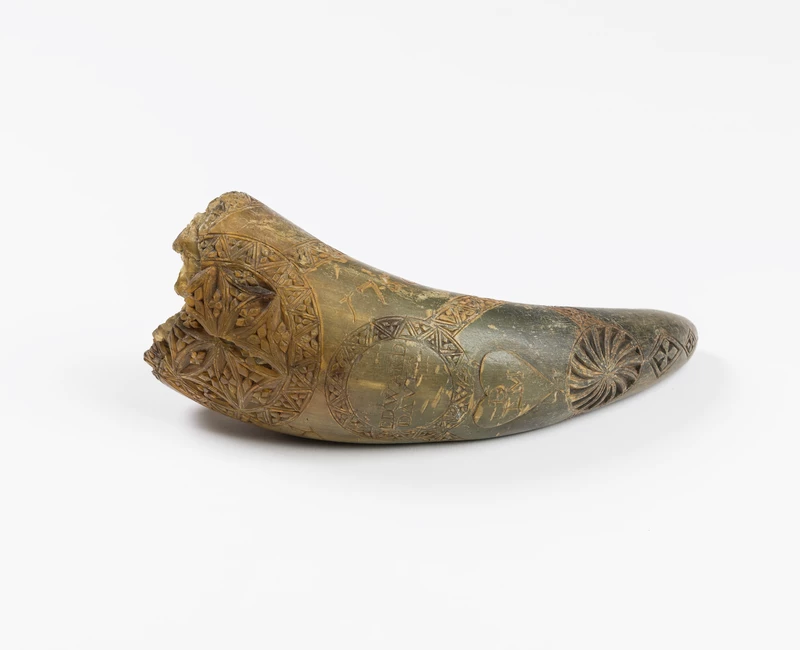Heddiw yng Nghymru rydym yn dathlu diwrnod Santes Dwynwen, nawddsant cariadon Cymru.
Gyda diwrnod Sant Ffolant hefyd ar y gorwel, beth am i ni edrych ar rhai o wrthrychau rhamantus y casgliad yn Sain Ffagan, eitemau a roddwyd fel arwydd o gariad. Wrth gwrs, mae’r rhan fwyaf ohonom yn gyfarwydd â’r llwy garu a’i phwysigrwydd yng Nghymru, a gallwch ddysgu mwy amdanynt fan hyn.
Ond yn y blog yma, hoffwn edrych ar rai o'r gwrthrychau llai hysbys sy'n gysylltiedig â chariad yn y casgliad, fel Gweiniau Gweill.
Teclyn oedd hwn i helpu gweu. Byddai’r wain yn cael ei wisgo ar ochr y corff i ddal gwaelod y waell, gan adael y llaw chwith yn rhydd i weithio’r edau ar y waell arall.
Byddai gweiniau gweill wedi ei cherfio, yn aml yn cael ei rhoi fel rhodd a symbol o gariad.
Mae’r wain yma wedi ei gerfio gyda'r flwyddyn 1802 a’r enw ‘Thomas Smith’, ac yn debygol wedi'i wneud fel anrheg ac arwydd o gariad. Mae wedi'i addurno â motiff blodyn, calon a physgodyn.
Mae’r un oddi tano ychydig yn hŷn, wedi ei greu yn 1754. Fel nifer o’r llwyau garu yn y casgliad, mae ganddo beli mewn cawell. Credir bod peli wedi’u cerfio mewn cawell yn cynrychioli’r nifer o blant y gobeithiai’r cerfiwr a’i gariad eu cael.
Arfer caru arall oedd cerfio pren staes fel anrheg i gariad.
Defnyddiwyd prennau staes gan ferched wrth wisgo staesys (corsedau). Rhoddwyd i lawr canol ffrynt y corsed er mwyn sicrhau bod y gwisgwr yn cadw osgo unionsyth anhyblyg. Roedd prennau staes yn rhodd boblogaidd i roi i gariad, gan ei bod yn cael ei gwisgo mor agos i’r galon. Defnyddir cerfluniau o galonnau, blodau, a symbolau eraill o gariad i’w addurno, yn aml gyda llythrennau cyntaf y ddau gariad.
Dyma bren staes o Lanwrtyd, Powys, gyda’r llythrennau RM ac IM arni.
Y prif symbol sydd i’w gweld ar y pren staes yw’r olwyn. Mae olwynion i’w gweld yn aml ar lwyau caru Cymreig hefyd, a dywedir eu bod yn brawf o addewid y cerfiwr i weithio’n galed ac arwain ei gymar trwy fywyd.
Roedd yr arfer o roi rhodd i anwylyd megis pren staes neu lwy garu yn rhywbeth roedd pobl o bob dosbarth mewn cymdeithas yn gallu ei gwneud. Byddent yn defnyddio offer syml fel cyllyll poced gan ddefnyddio deunyddiau oedd wrth law ac yn fforddiadwy.
Mae yna amrywiaeth eang mewn steil a dyluniad i bob un o’r rhoddion rhamantus yma, pob un yn unigryw, fel y corn buwch yma wedi'i cherfio ym 1758 yng nghyffiniau Aberystwyth, fel anrheg gan Edward Davis i'w gariad Mary.
Mae’r rhoddion yma yn taflu goleuni unigryw ar brofiadau emosiynol y perchennog a'r rhai a oedd yn eu caru. Gwrthrychau i'w drysori oeddynt, ond yn perthyn i bobl gyffredin – pobol sydd mor aml wedi cael ei anwybyddu gan hanes. Trwy symbolau, lluniau a llythrennau wedi'u cerfio ar y rhoddion, gawn gip olwg o stori garu, eu gobeithion a’u dyheadau.



















